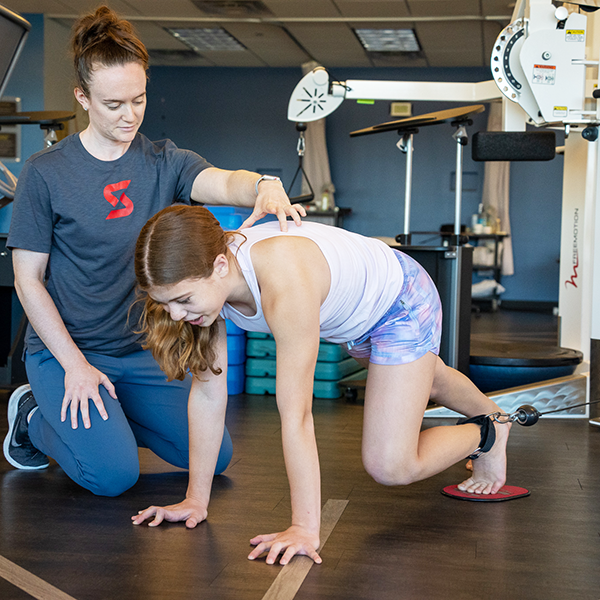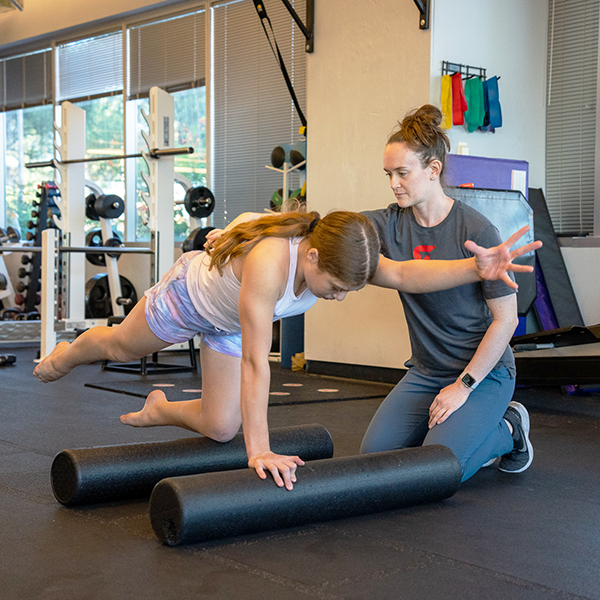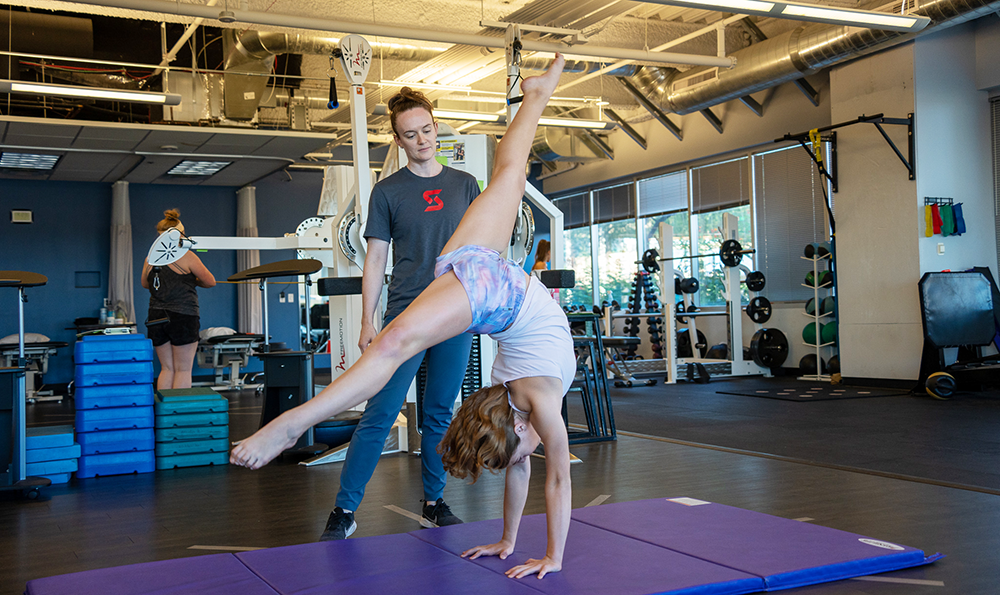Gymnastics is a sport that requires agility, flexibility, and strength. It is multi-disciplinary including events like balance beam, uneven bars, vault, and floor. Each event requires different sets of skills and strengths for the athlete to perform their best. We talked to Alyssa Hixon, PT, DPT, a physical therapist, a gymnastics coach with the Arizona Sunrays, and a former gymnast, to get her expert sports medicine perspective into the world of gymnastics:
You have a pretty unique perspective into the sports medicine environment for gymnasts as a coach and a physical therapist. What do you see in these two different roles?
When I am treating in the clinic, I can use a lot of my coaching expertise to really work on specific skills– what they are doing and how they are doing it. In the gym, I am first and foremost a coach, but I bring my physical therapist background with me. I know when an athlete has done one too many repetitions or if they need to build up their strength in another skill for balance.
You see gymnasts inside and outside of practice. What would you say are the physical demands of gymnastics?
It’s a lot of repetition: skills, movements, and strength and conditioning. With gymnastics, there are so many different events, and each event has its own unique qualities. The strengths and techniques needed for the uneven bars are very different from what is needed for the vault. This is why it’s such a cool sport to work with, but it’s also really hard to work with at the same time. From a rehab perspective, there are so many different things they need to get stronger at and get back to, so this is the challenge as the physical therapist.

Unfortunately, low back pain is prevalent. This is due to the hyperextension movements gymnasts do.
The sport itself is extremely repetitive. The gymnasts are practicing specific skills over and over again to perfection. Because of this, repetitive and overuse injuries are incredibly common. In younger gymnasts, Osgood-Schlatter Disease, which is a repetitive use injury in the knee, and Sever’s Disease, a repetitive use injury in the Achilles tendon and heel, are quite common.
Overuse injuries are typically more common than traumatic injuries. Traumatic injuries do happen but not on the same scale as overuse injuries. In the NCAA this past year, Achilles tears were extremely prevalent. My guess for this is that every gymnast is trying to push their limits and push themselves harder. The sport is “go, go, go” all of the time, and the amount of workload isn’t keeping up with the strength capacity they need to perform at that pace.
What does sports specialization look like for gymnasts? What should rest or possibly an off-season look like for this athlete?
Gymnastics takes a lot of practice and dedication to master technique and skill. When kids are younger, they should try out and participate in multiple sports in addition to gymnastics to make them a more well-rounded athlete. With multi-sport participation, we want to make sure we are managing the total workload and still allowing for rest time to prevent overuse injuries. Because gymnastics has so many components to it, learning from other sports can help with all areas needed to succeed!
An off-season or time off could look like 1-2 weeks off at a time a few times a year. This all depends on the athlete’s competition schedule. We can help manage off-season and in-season training with appropriate periodization and workload management. We are mindful to have times throughout the year dedicated to strength and conditioning while maintaining skill level and even decreasing focus on skills.

I do a thorough evaluation including symptoms, mobility, and a skills assessment– if they are able to. I try to see as many skills as I can in the clinic, like a back handspring. Skills like vaulting or swinging on the bars can’t be performed in the clinic, so I have the gymnast bring in videos of them performing these specific skills. This is also helpful if they can’t perform a task due to injury. In person or on video, I can assess their form. I try to the best of my ability to mimic what they are going to have to do in the gym. We start off getting the gymnast comfortable with those tasks, and then we increase the reps, the weights, and the numbers because gymnastics is such a repetitive sport. Their body has to be ready for the repetition.
What do you think other PTs should know when working with gymnasts?
Physical therapists should have an understanding of the sport their athletes are trying to return to. This applies equally to gymnastics. Many people do not know exactly what goes into gymnastics movements. A clinician should dive into what the gymnast’s practice looks like. This could be asking if they are landing on soft or hard surfaces, what skills they are currently practicing, and what skills they want to acquire next. Doing research on these things is vital.
I always ask what their routines are for each event. If they are on levels 1-5, the routines are all the same throughout the country. I know those routines, and I know the skills that are required. If they are level 6-10 or in the Xcel program, their routines can vary. They can have different skills; they can have different requirements. Understanding the skills they are consistently repeating, what their practice environment is like, and what their competition schedule is something each clinician should do to properly help the gymnast get stronger.
If you are or are the parent or coach of a gymnast and have an athlete pushing through pain, a 15-minute complementary assessment with a Spooner therapist can help determine how to help your athlete move, feel, and perform their best.

